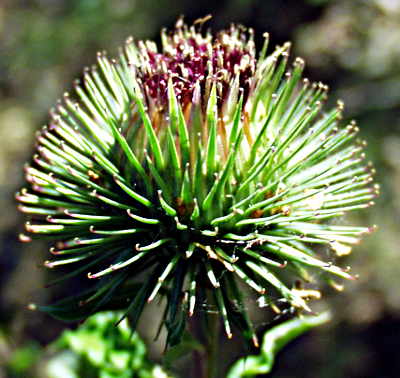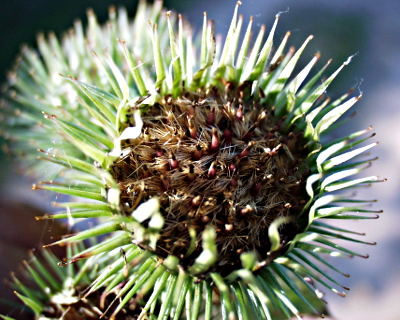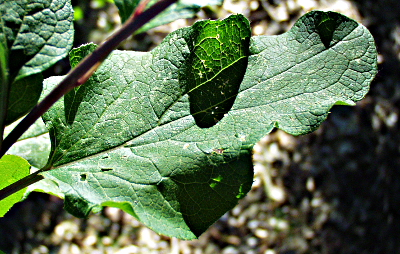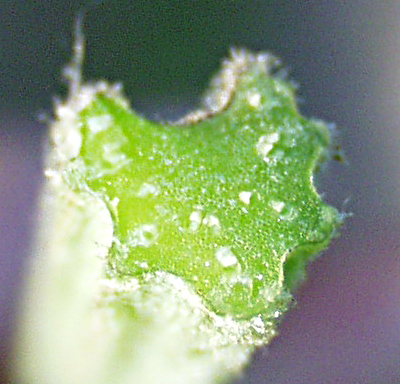Greater burdock |




Inflorescence, infructescence, leaf and a cross section of the petiole of the greater burdock
| Arctium lappa L.: | |
| Blooming period: | July–September |
| Height: | 80–300 cm |
| Flowers: | in heads, Ø of the heads 25–45
mm, stamens:
5, styles: 1 |
| Ray florets: | missing |
| Disc florets: | pink to purple |
| Calyx: | transformed into a pappus |
| Stem leaves: | alternate, stalked, egg-shaped, entire to coarsely toothed, undulated |
| Basal leaves: | up to 70 cm long, petiole solid, heart-shaped, entire to coarsely toothed, undulated |
Biennial plant, herbaceous, with a deep, strong, sometimes more than 7 cm thick taproot.
Stem erect, grooved, hollow, rough, sometimes arachnoid, branched. Branches spreading.
Stem leaves alternate, losing upwards in size, stalked, lamina ovate, base truncate or cordate, entire, coarsely toothed or weakly lobed, undulated, grey tomentose underneath.
Basal leaves large, long-petiolated, petiole solid, leaf blade cordate, lobed, entire, coarsely toothed or slightly undulated, grey tomentose underneath.
Flower heads terminally or laterally, in loose, racemose, umbellated panicles, almost sessile or stalked up to 10 cm. Receptacle flat and densely bristly. Bristles filiform, white, about 5 mm long.
The linear to linear-lanceolate phyllaries are arranged imbricated in numerous rows. They have an inwardly directed, short hook at the top. The tips of the outer phyllaries are spreading, those of the inner ones are upright and green or yellowish. Involucre spherical, sometimes arachnoid, at the fruiting time opened.
The flower head consists solely of 40 tubular florets which are pink to purple or rarely white, 9-14 mm long, hermaphrodite and 5-dentate. They possess purple stamens and white pistils, florets at the base without chaffy scales.
After insect pollination are formed 5–7.5 mm 2–5 mm long, rough, dark brown, spotted, oblong, triangular, ribbed nut fruits (achenes), at the top with a few circles of long, barbellate, white or yellowish bristles.
Arctium lappa may form bastards with A. tomentosum , A. minus and A. nemorosum.
| Floral formula: |
| * K=pappus [C(5) A5(connate)] G(2) inferior |
Occurrence:
On
path
and roadsides, ruderal areas, fallow land, forest edges.
Prefers very
sunny, slightly warm, slightly damp and very nitrogen-rich locations.
Distribution:
Originally
Eurasia, introduced in North America.